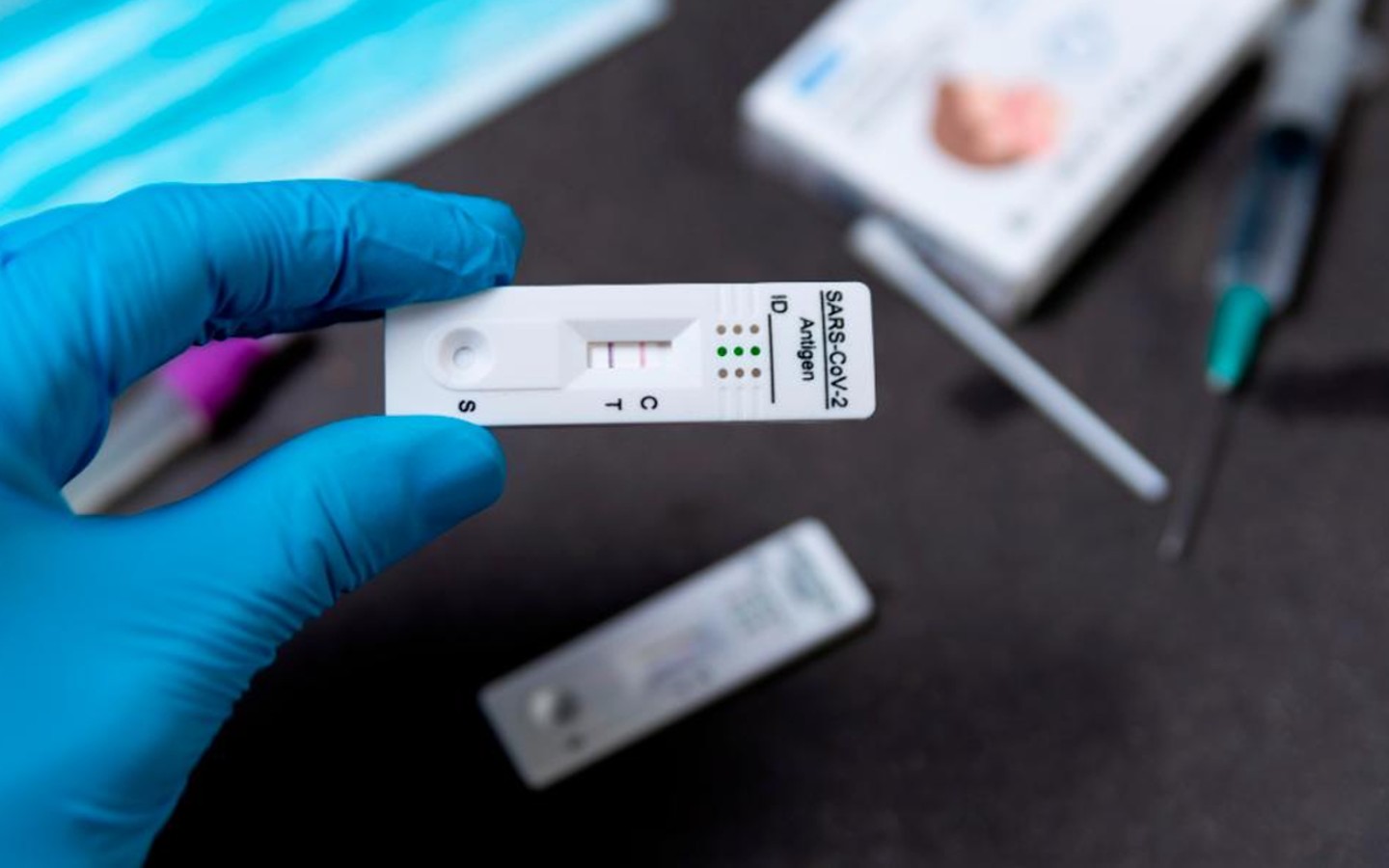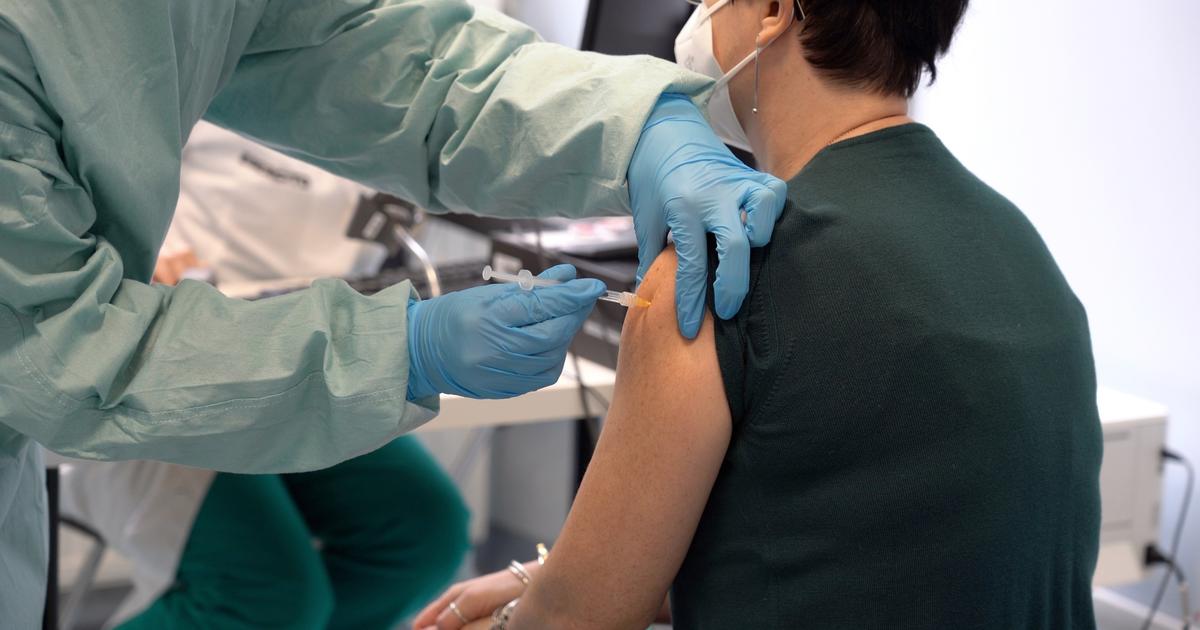The US reaches the grim number of 1 million deaths from covid-19 0:37
(CNN) --
Infections with the COVID-19 virus are on the rise, with most US states seeing an increase in cases.
According to the US Centers for Disease Control and Prevention (CDC), the highly contagious subvariant BA.2.1.21 of omicron is now the dominant coronavirus strain nationwide .
After two years of the pandemic, many do not know what to do after having tested positive for covid-19.
Should they self-isolate, and if so, for how long?
How important is it to see a doctor?
What therapies are available and who can opt for them?
To answer these and other questions, I spoke with Dr. Leana Wen, CNN Medical Analyst, ER Physician, and Professor of Health Policy and Management at George Washington University's Milken Institute School of Public Health.
She is also the author of "Lifelines: A Doctor's Journey in the Fight for Public Health" and the mother of two young children.
The United States exceeds one million deaths from covid-19: how are mortality data from diseases like this interpreted?
CNN:
It seems like a lot of people are being diagnosed with Covid-19 right now.
I have friends who have been very careful during the pandemic who are now testing positive.
What is this about?
Dr. Leana Wen
: First and foremost, we are dealing with an extremely contagious subvariant.
The original omicron variant was already more contagious than the delta and earlier variants.
Then we had BA.2, a subvariant of omicron that was more contagious than omicron, and now we have a branch of BA.2, called BA.2.1.21, which appears to be even more contagious.
advertising
A more transmissible variant means that activities we previously considered relatively safe are now higher risk.
This does not mean that we should avoid all activities, but rather that people who were previously very careful may now become infected due to how contagious this subvariant is.
In addition, people previously infected with omicron have some degree of protection against this new subvariant;
those not previously infected are now more susceptible.
Fortunately, this variant does not appear to cause more severe disease in most people, and the vaccine and first booster still provide good protection against hospitalization and death for those infected.
More than a million deaths from covid-19 in the US 4:38
Another reason for the rising number of infections is that people are engaging with each other more, even indoors and without masks.
Anytime these interactions occur, there is a risk of transmission.
Again, this is not to say that people should never interact with each other, but to be aware of the risk and take precautions, especially for people who are immunocompromised and others at higher risk of serious illness.
CNN:
If someone is diagnosed with COVID-19, what should they do?
Is isolation still recommended?
Wen
: Yes, it is, and in fact, it's the first thing I recommend people do if they test positive for covid-19.
Whether they have done their own test at home and have a positive result or received a positive result from a PCR test, they should isolate immediately.
If they are at home, they should go to a room away from the others.
If you are at work, put on an N95 mask to travel through public areas and head home, ideally in your own vehicle.
Isolation isn't always easy, especially for those with young children and living in multi-generational housing.
If possible, identify another adult to care for young children so the infected person can self-isolate.
If a child is the one who has tested positive, assign an adult to care for that child.
CNN
: How long should people self-isolate?
Wen
: The day you test positive is day zero.
If you had symptoms before that, say the day before, that day is day zero, whichever comes first.
Day 1 is 24 hours after the positive test or symptom onset.
He must be isolated from others for five days.
That means not being in the same room at home with the people you live with and not going to work in person.
If you have to share, for example, a bathroom, make sure to wear a well-fitting N95, KN95 or KF94 while in these common areas, minimize the time you spend in them and open the windows as much as possible.
The FDA authorizes children between the ages of 5 and 11 to receive a booster vaccine against covid-19
The CDC says that after the fifth day of isolation, if you don't have a fever and your symptoms are improving, you can go to public places like grocery stores and to work and school, as long as you wear a well-fitting mask at all times.
Many workplaces and schools have their own policies that are stricter than this and may require, for example, a full 10 days before returning.
Also, I want to note that the CDC does not say that after the fifth day you can freely associate with your family and people in your home.
It could still be contagious.
The CDC says that everyone should continue to wear a mask for days 6 to 10. That includes not having dinner with people you live with, indoors, during those days.
Many public health experts, myself included, would recommend testing outside of isolation as an added level of precaution that also reduces discomfort.
This is not what the CDC says, but I think it is reasonable to start testing with a home rapid test from day 5. If the test is negative on day 5 and day 6, and you do not have a fever and symptoms improve , then I could come out of isolation.
That would make the isolation period less onerous, especially for families who live in small spaces or have young children to care for.
CNN:
What therapies should people take?
Should everyone take them?
Wen:
It is important that you call your health care provider and ask if you are eligible for therapy.
I would call whether you have mild symptoms, severe symptoms or not, because you need to know what your options are.
There are three main types of therapies, all of which are meant to be taken before someone becomes seriously ill, to avoid hospitalization.
In general, the earlier therapies are started, the more effective they will be.
The three options are antiviral pills (paxlovid and molnupiravir are the two antivirals that have been licensed), monoclonal antibodies, and remdesivir.
The pills are taken orally, while the other two require injections or infusions.
They are intended for people at higher risk of disease progression.
Some of the therapies may not be readily available in your area.
Others may interact with other medications or treatments you are taking.
The FDA limits the use of the Johnson & Johnson vaccine in the US 1:59
I highly recommend that people talk to their health care providers before they get sick so they have a plan.
Someone who is 20 years old and healthy is probably not suitable for these therapies, but someone who is 60 years old with some chronic disease will be.
Know in advance what you would receive if you test positive and how you would access therapies, including after hours and on weekends.
If you don't already have this plan, call your provider immediately after testing positive and discuss options.
For people who don't have a regular medical provider, the federal government has a therapy locator, which includes a "test to treat" option where people can go get tested, see an urgent care provider, and get therapies, all in the same place.
State and local health departments may also have additional information and resources.
CNN
: How do you address skeptics who might ask what's the point of getting vaccinated if vaccinated people can get infected?
Wen
: Let's talk about the main purpose of vaccination.
The most important reason is to reduce the probability of serious illness and prevent infected people from being hospitalized and dying.
That's why it's so important to stay up-to-date on your immunizations, get your initial shots and then your booster shots, because vaccinated and boosted people are much less likely to get seriously ill and die compared to unvaccinated people.
Vaccination also reduces the chance of infection, but that risk still exists.
For people who want to further reduce their risk of contracting COVID-19, other precautions remain important, such as wearing an N95 mask or equivalent when in closed public places, and testing the same day before gatherings, especially if COVID-19 levels in the community are high.
coronavirus








